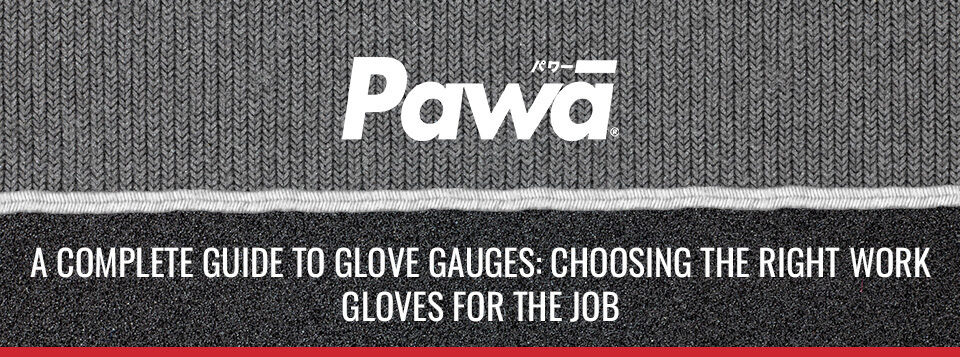When it comes to selecting the right safety gloves for work, the choice can feel overwhelming. With so many styles, coatings, and standards to consider, where do you even begin? One of the most common – and most confusing – terms you’ll come across is glove gauge.
So, what exactly does glove gauge mean, and why is it so important when choosing work gloves? Let’s break it down.
What is Glove Gauge?
The term glove gauge refers to the number of stitches knitted per inch of fabric in the glove’s liner. It’s a measurement of how tightly the glove has been knitted:
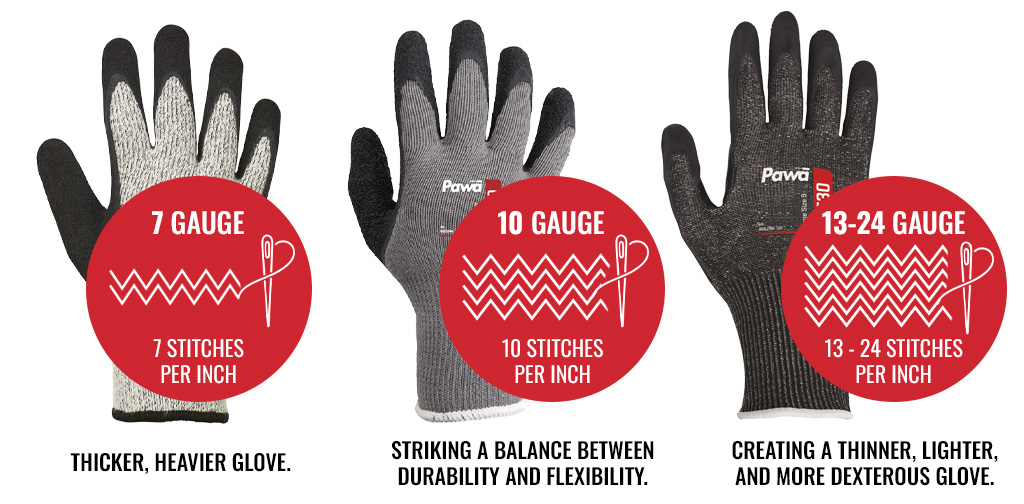
- A 7-gauge glove has 7 stitches per inch – resulting in a thicker, heavier glove.
- A 10-gauge glove has 10 stitches per inch – striking a balance between durability and flexibility.
- A 13–24 gauge glove has more stitches per inch – creating a thinner, lighter, and more dexterous glove.
In practical terms, the higher the gauge, the tighter and thinner the glove liner, giving the wearer more dexterity and comfort for precision work. Lower gauges tend to provide bulkier protection, making them ideal for heavy-duty tasks.
We go beyond industry norms by offering gloves from 7 gauge all the way up to 21 gauge. This means we can supply protective gloves for everything from rugged construction work to the most delicate assembly tasks.

Why Does Glove Gauge Matter?
Understanding glove gauge is essential because it affects:
- Dexterity: Higher-gauge gloves are thinner and allow for greater flexibility, making them ideal for tasks that require precision handling.
- Comfort: A tighter knit often results in a lighter and more ergonomic glove.
- Protection: Lower gauge gloves tend to be thicker, offering solid defence against abrasion and impact. However, thickness doesn’t automatically equal cut resistance. Advances in yarn technology now allow higher gauge gloves to combine lightweight comfort with impressive cut protection, giving wearers the best of both worlds.
- Application suitability: Two gloves with the same gauge can perform very differently depending on their coating and liner composition. That’s why it’s important to look beyond gauge alone.

Glove Gauges Explained: From 7 Gauge to 21 Gauge
To help you make sense of glove gauges, here’s an in-depth breakdown of what you can expect at each level, with examples from the Supertouch and Pawa® safety glove ranges.
7 Gauge Gloves – Heavy-Duty Durability

Best for: Rugged handling, construction, cold environments.
- Supertouch Handler Glove – A mixed fibre glove with a textured latex palm for powerful grip, breathable comfort, and long-lasting durability. Ideal for general handling.
- Pawa® PG540 – A 7-gauge, ISO Level D cut-resistant glove designed for cold environments. With an acrylic thermal lining and heavy-duty latex palm and thumb coating, it combines warmth, grip, and robust protection.
Key takeaway: Both are 7-gauge gloves, but their purpose differs. The Handler Glove is designed for everyday handling and grip, while the PG540 combines insulation and cut resistance for heavy-duty use in cold conditions.
10 Gauge Gloves – Versatility and Strength
Best for: General handling, cut resistance, industrial tasks.
- Pawa® PG140 – A general-purpose grip glove with PawāGRIP™ latex coating, designed for extended wear comfort and powerful grip in demanding applications.
- Pawa® PG520 – A high-performance Kevlar®/Steel/Glass blend glove with Cut Level E protection, excellent abrasion resistance, and ergonomic comfort.
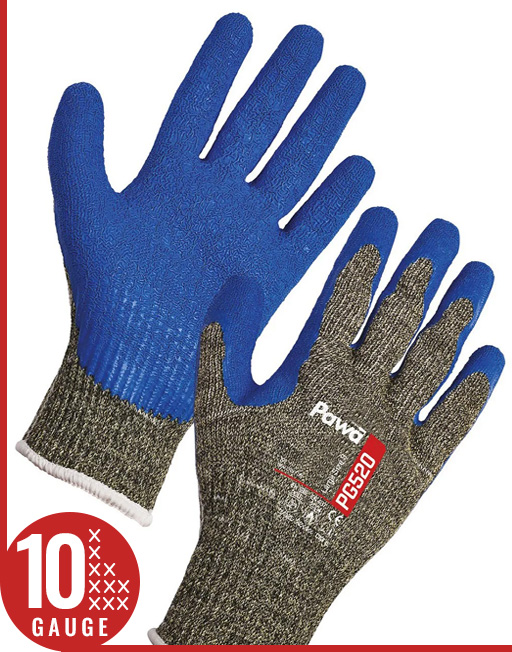
Key takeaway: Both are 10-gauge gloves, but the PG140 is an all-rounder for everyday handling, while the PG520 is engineered for high cut resistance in tough industrial environments.
13 Gauge Gloves – Flexibility with Protection
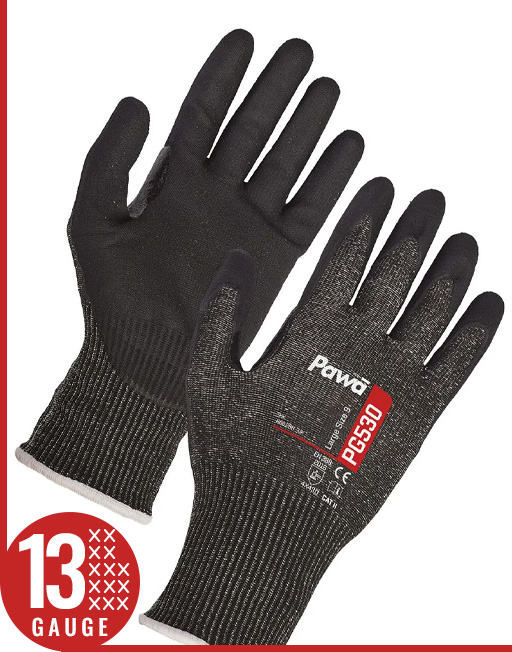
Best for: Handling tasks requiring both dexterity and durability.
- Deflector PD – Lightweight Cut Level D protection with a polyurethane palm coat, designed for comfort and flexible handling.
- Pawa® PG530 – Built for tough mechanical environments, this glove offers Cut Level D protection, abrasion resistance, and a reinforced thumb crotch for durability.
Key takeaway: Both provide Cut Level D protection at 13 gauge, but Deflector PD focuses on light, flexible general handling, while the PG530 adds durability, breathability and reinforcement for demanding mechanical work.
15 Gauge Gloves – Enhanced Dexterity
Best for: Precision tasks.
- Duranite® – Seamless liner with micro foam nitrile coating for abrasion resistance, breathability, and touchscreen capability.
- Deflector F Blade Liner – A cut-resistant liner suitable for food contact, crafted from HPPE polyester stainless-steel yarn for high cut resistance with flexibility.
- Pawa® PG251 – Cut Level D protection with PawāDRY™ water-resistant technology, designed for superior grip in wet environments.
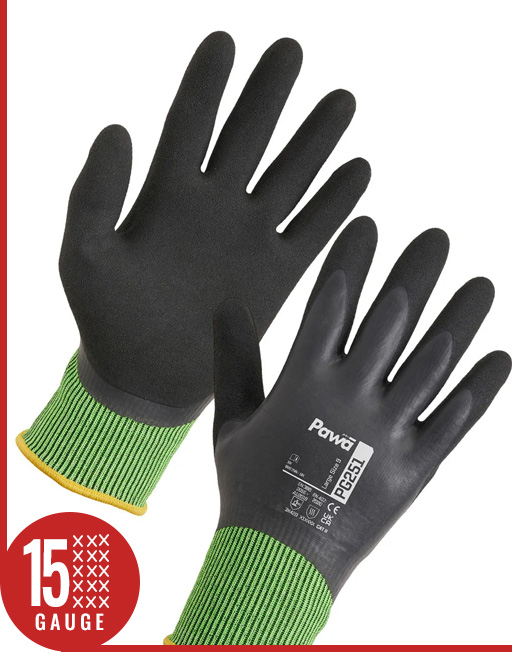
Key takeaway: At 15 gauge, you can achieve lightweight comfort across very different tasks. Duranite is built for dexterity and abrasion resistance, the Deflector Blade F Liner delivers food-safe cut protection, and the PG251 offers reliable performance in wet, high-risk environments.
18 Gauge Gloves – Ultralight Precision
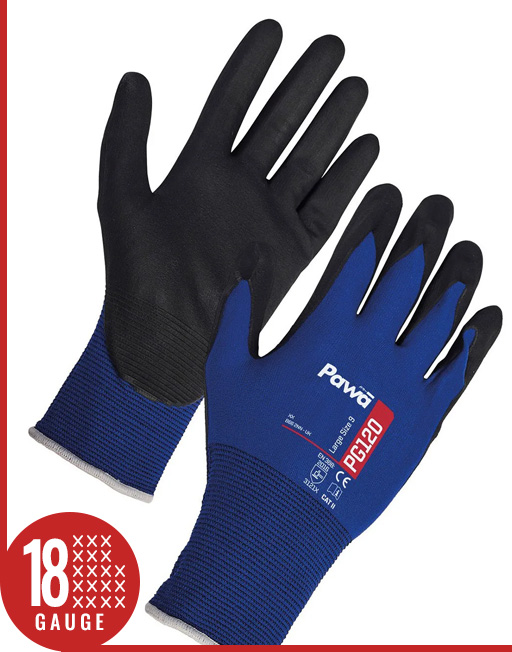
Best for: Precision assembly, prolonged wear, manufacturing.
- Pawa® PG120 – Ultralight nitrile micro foam glove with outstanding abrasion resistance, comfort, and breathability.
- Pawa® PG535 – Cut Level D glove with PU coating, touchscreen compatibility, and reinforced durability for modern production environments.
Key takeaway: Both are thin, ultralight 18-gauge gloves. The PG120 is optimised for comfort and abrasion resistance, while the PG535 adds cut protection and touchscreen capability for precision tasks in demanding industries.
21 Gauge Gloves – Maximum Dexterity with Protection
Best for: High-precision tasks, modern assembly, high cut risks.
- Pawa® PG561 – A 21-gauge Cut Level F glove with smooth PU coating for ultimate precision, lightweight comfort, and advanced cut protection.
- Pawa® PG562 – A 21-gauge Cut Level E glove with sandy nitrile coating for superior dexterity, reinforced thumb crotch, and touchscreen compatibility.
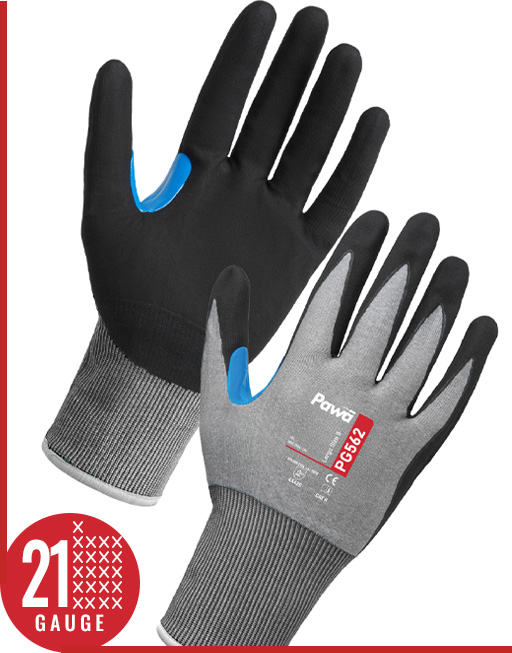
Key takeaway: Both represent the cutting edge of glove innovation at 21 gauge. The PG562 delivers dexterity with a sandy nitrile grip and Cut Level E protection, while the PG561 pushes performance further with Cut Level F protection for the most hazardous tasks.
Choosing the Right Gauge and Coating Combination for Your Needs
When deciding which glove gauge is best for your role, consider:
- Task type: Heavy-duty vs precision handling.
- Environment: Cold, wet, oily, or dry conditions.
- Protection required: General handling, cut resistance, or specialised protection.
Remember – two gloves with the same gauge can perform very differently due to coatings and liners. Gauge is only one piece of the puzzle.

Supertouch: Your Partner in Hand Protection
We know that one glove doesn’t fit all. That’s why we provide a wide range of safety gloves across multiple gauges, liners, and coatings – ensuring the right protection for every industry, from construction and automotive to food handling and logistics.
👉 Looking for more guidance?
- Read our [Glove Coatings Guide] to understand how different coatings perform.
- Explore our Cut Resistance Guide for a full breakdown of cut levels and protection.
Whether you need heavy-duty protection or ultra-light dexterity, Supertouch has the glove for you.

